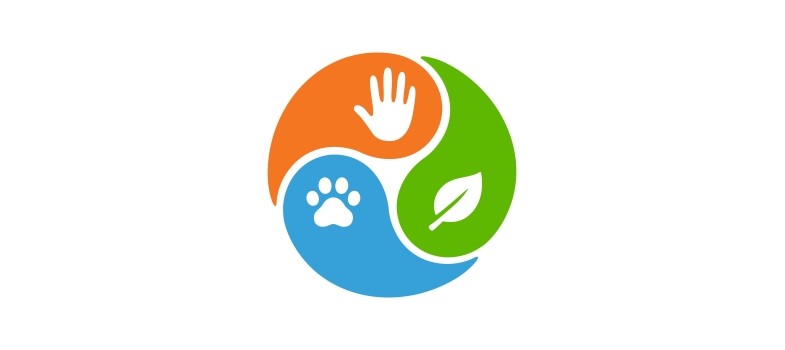6 Leading the fight against AMR at the global level: the Quadripartite
The
- World Health Organization (WHO)
Food and Agriculture Organization (FAO) - World Organisation for Animal Health (WOAH), formerly the Office International des Epizooties (OIE)
- United Nations Environment Programme (UNEP).
The Quadripartite consolidates cooperation between these organisations to support the global response to AMR across the One Health spectrum. Its mission is to ‘work together to preserve antimicrobial efficiency and ensure sustainable and equitable access to antimicrobials in human, animal and plant health, thereby furthering progress on the Sustainable Development Goals (SDGs)’ (WHO, 2025 [Tip: hold Ctrl and click a link to open it in a new tab. (Hide tip)] ).
The four organisations in the Quadripartite have developed a joint strategic framework for collaboration on AMR (FAO/ WOAH/ WHO/ UNEP, 2022).
Activity 6: Looking at the Quadripartite
Part 1
Spend a few minutes exploring the separate roles of the four organisations in relation to AMR, then answer the questions in Part 2.
- Visit the WHO’s AMR website (WHO, n.d.) and scroll down to the section labelled ‘Our work’. The WHO states that its core role is to ‘co-ordinate the global AMR response in collaboration with key partners’.
Visit the AMR section of the WOAH website (WOAH, n.d.) and spend a few minutes browsing the information.
Key roles of WOAH include the following:
- Guiding the prudent use of antimicrobials in terrestrial and aquatic animals.
- Developing intergovernmental standards on AMR and on monitoring the quantities of antimicrobial agents used.
- Establishing a worldwide database to monitor the use of antimicrobial agents in animals. WOAH supports member countries to develop systems for measuring and reporting antimicrobial use in animals at the country level. The purpose of this system is to improve countries’ capability to reliably measure AMU in different animal production systems, which will contribute to a global and regional analysis of antibiotic use in animals and indicate changes over time.
Visit the AMR section of the FAO website (FAO, n.d.) and look at The FAO Action Plan on Antimicrobial Resistance 2016–2020 (FAO, 2016).
Key roles of FAO include the following:
- Supporting governments, producers, traders and other stakeholders to move towards the responsible use of antimicrobials in agriculture.
- Setting international standards for food and animal feed, through its role of hosting the Codex Alimentarius, or ‘Food Code’: a collection of standards, guidelines and codes of practice adopted by the Codex Alimentarius Commission. The Commission, also known as the CAC, is the central part of the Joint FAO/WHO Food Standards Programme and was established by the FAO and the WHO to protect consumer health and promote fair practices in food trade.
- Supporting AMR surveillance in animals and food by producing the following resources: Regional Antimicrobial Resistance Monitoring and Surveillance Guidelines: Volume 1, Monitoring and Surveillance of Antimicrobial Resistant Bacteria from Healthy Food Animals Intended for Consumption (FAO, 2019) and the FAO Assessment Tool for Laboratories and AMR Surveillance (FAO-ATLASS) (FAO, n.d.).
- Visit the ‘About us’ page of the Quadripartite website (WHO, 2025) and review the description of the UNEP. Key roles for the UNEP include:
- highlighting the environmental dimensions of AMR
- outlining environmental actions to address AMR.
a.
FAO
b.
WOAH
c.
WHO
d.
UNEP
The correct answer is c.
Answer
The WHO Integrated Antimicrobial Stewardship toolkit provides practical guidance on setting up antimicrobial stewardship (AMS) programmes in the human health sector (WHO, 2019b).
a.
FAO
b.
WOAH
c.
WHO
d.
UNEP
The correct answer is b.
Answer
The WOAH provides a list of antimicrobial agents recommended for use in food-producing animals, separating these into levels of importance with a view to preserving their efficacy.
a.
FAO
b.
WOAH
c.
WHO
d.
UNEP
The correct answer is a.
Answer
For example, the FAO hosts the Codex Alimentarius, which provides guidelines designed to minimise the transmission of AMR through the food chain. You can read about Codex Alimentarius on the FAO website.
a.
FAO
b.
WOAH
c.
WHO
d.
UNEP
The correct answer is c.
Answer
This is called the Global Antimicrobial Resistance Surveillance System (GLASS), which you can read about on the WHO’s GLASS website. There is also more information in the Introducing AMR surveillance systems course.
a.
FAO
b.
WOAH
c.
WHO
d.
UNEP
The correct answer is a.
Answer
For example, the FAO’s own action plan on AMR aims to increase existing laboratory capacities for monitoring AMR and detecting antimicrobial residues (FAO, 2016).
a.
FAO
b.
WOAH
c.
WHO
d.
UNEP
The correct answer is b.
Answer
The WOAH supports surveillance of AMU in animals by providing a system and tools for countries to report AMU in animals at the country level (WOAH, 2020).
a.
FAO
b.
WOAH
c.
WHO
d.
UNEP
The correct answer is d.
Discussion
You may have found it difficult to identify the relevant organisation for each activity because there is some cross-over, so don’t worry. This is one reason why it is so important that these organisations collaborate!
You probably noticed that all the organisations mention the importance of a One Health approach, and are committed to implementing the Global Action Plan for AMR (WHO, 2015), which has five strategic objectives to:
- improve awareness and understanding of AMR
- strengthen knowledge through surveillance and research
- reduce the incidence of infection
- optimise the use of antimicrobial agents
- develop the economic case for sustainable investment that takes account of the needs of all countries, and increases investment in new medicines, diagnostic tools, vaccines and other interventions.
5.7 Controlling water-borne transmission of AMR




